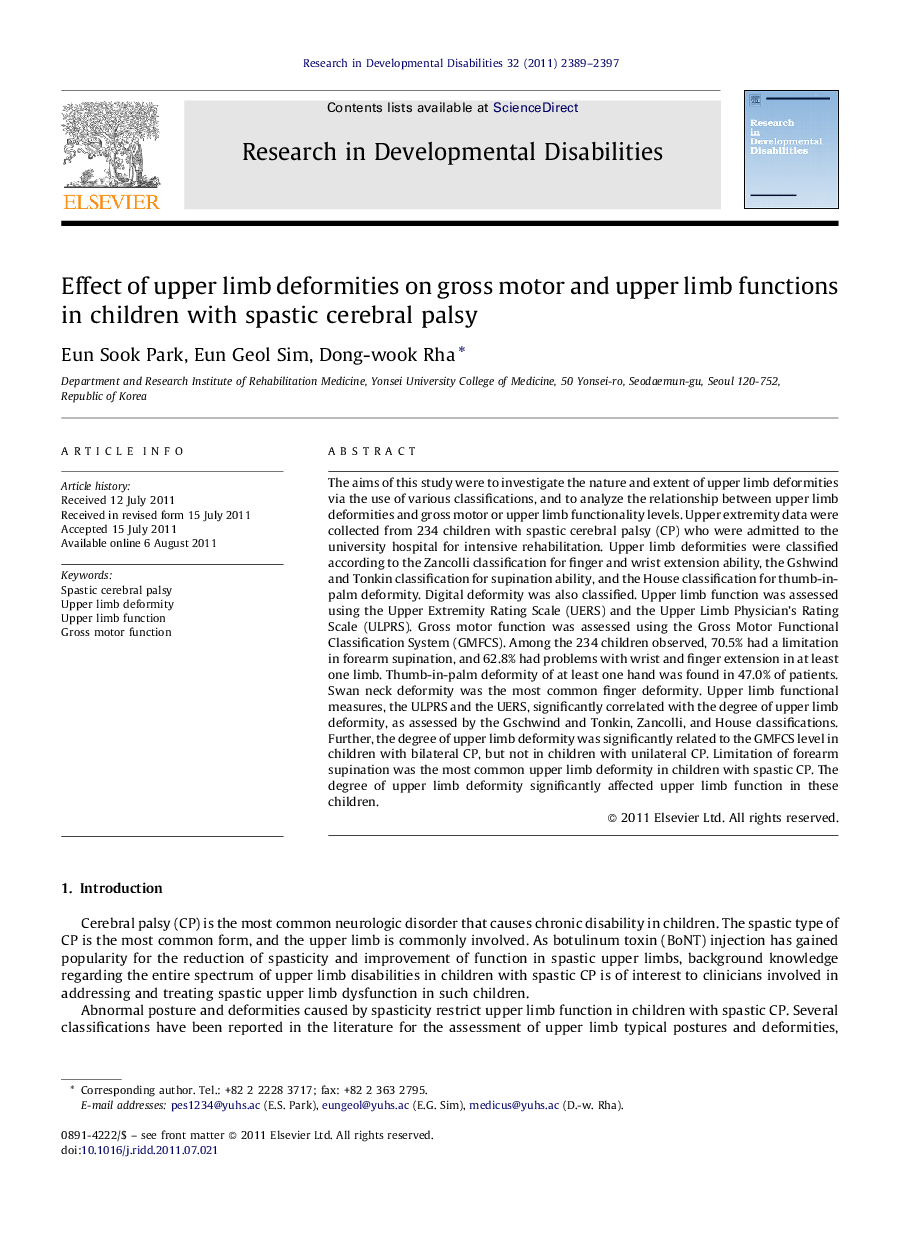| کد مقاله | کد نشریه | سال انتشار | مقاله انگلیسی | نسخه تمام متن |
|---|---|---|---|---|
| 371819 | 621941 | 2011 | 9 صفحه PDF | دانلود رایگان |

The aims of this study were to investigate the nature and extent of upper limb deformities via the use of various classifications, and to analyze the relationship between upper limb deformities and gross motor or upper limb functionality levels. Upper extremity data were collected from 234 children with spastic cerebral palsy (CP) who were admitted to the university hospital for intensive rehabilitation. Upper limb deformities were classified according to the Zancolli classification for finger and wrist extension ability, the Gshwind and Tonkin classification for supination ability, and the House classification for thumb-in-palm deformity. Digital deformity was also classified. Upper limb function was assessed using the Upper Extremity Rating Scale (UERS) and the Upper Limb Physician's Rating Scale (ULPRS). Gross motor function was assessed using the Gross Motor Functional Classification System (GMFCS). Among the 234 children observed, 70.5% had a limitation in forearm supination, and 62.8% had problems with wrist and finger extension in at least one limb. Thumb-in-palm deformity of at least one hand was found in 47.0% of patients. Swan neck deformity was the most common finger deformity. Upper limb functional measures, the ULPRS and the UERS, significantly correlated with the degree of upper limb deformity, as assessed by the Gschwind and Tonkin, Zancolli, and House classifications. Further, the degree of upper limb deformity was significantly related to the GMFCS level in children with bilateral CP, but not in children with unilateral CP. Limitation of forearm supination was the most common upper limb deformity in children with spastic CP. The degree of upper limb deformity significantly affected upper limb function in these children.
► We investigated upper limb deformities in children with spastic cerebral palsy.
► The limitation of forearm supination was the most common upper limb deformities.
► The swan neck deformity was the most common finger deformity.
► The severity of deformities related to function in bilateral cerebral palsy.
► The severity of deformities did not relate to function in unilateral cerebral palsy.
Journal: Research in Developmental Disabilities - Volume 32, Issue 6, November–December 2011, Pages 2389–2397